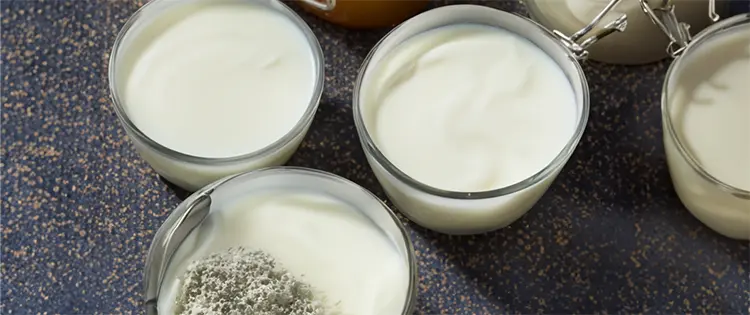When you start making lists and taking inventory of the products and foods you’ll want to have on hand in the case of an emergency, the items you can either buy and stockpile or make and store for the long term, one that you will undoubtedly want to include is milk.
Unfortunately, milk is not the easiest food product out there in terms of long-term viability.
Sure, there is powdered milk, and that’s fine if it’s your only option. But many object to the taste of reconstituted powdered milk. Shelf-stable dairy-free milk, like almonds, macadamia, and oats, are another option, as are store-bought canned condensed and evaporated milk.
And it’s such canned milk products that likely have the most extended shelf lives—best-by dates on most suggest they will remain viable for at least a year (experts, however, deem that in general, all canned food products will last and still be edible for at least two years).
Related: How To Dehydrate Milk For Long Term Storage (Video)
Did you know you can easily make your own condensed milk? When I say easily, I mean really easily. The hardest part is the frequent stirring and waiting the process requires. There are also numerous reasons, above and beyond the ease of doing so, why you should make your own condensed milk.
But first, let’s clearly define what, exactly, condensed milk is. Condensed milk is sweetened, concentrated milk that has had roughly 60% of its water content removed.
Evaporated milk is the same, except it is a pure milk product—no sugar or sweetener added. (I will add a brief explanation of how to make evaporated milk at the end of the main article.)
It is commonly believed that condensed milk was created to meet the nutritional needs of civil war soldiers. Another possibility is that it was created to nourish ill, malnourished children who came to the United States as immigrants aboard ships from Europe.
Why Condensed Milk?
And indeed, nourishing it was and still is. In terms of calories, condensed milk is an excellent item for homesteaders, survivalists, and anyone else who wants to be prepared and self-sufficient to have on hand.
A 14-ounce can (the standard store size) contains 1,300 calories (as well as 22 grams of carbs, 3 grams of protein, and a bit of calcium too). It’s easy to see the value of condensed milk in such situations. In a survival situation, 1,300 calories could be highly beneficial.
Other reasons to make condensed milk a part of your emergency pantry include:
- No electricity is required to store it.
- It will not attract rodents or insects.
- It does not need to be protected from humidity.
- Many uses and can be used as a substitute for other sweeteners.
- Much less storage space than regular or even alternative milk products.
- Shelf life of about two years.
Why Make It Yourself?
But why shouldn’t you just buy your condensed milk at the store? Why should you make it yourself?
- When you make it yourself, you can guarantee a clean cooking environment and ingredients. With commercially made condensed milk, you can’t be sure of the quality of the products or the process’s cleanliness.
- It’s less expensive to make it yourself.
- Sugar is a natural preservative, making home canning easier and safer and extending shelf life beyond two years.
- If you have dairy animals, this is an excellent use of surplus milk.
- Have I mentioned how incredibly easy it is to make?
So let’s get to it.
Supplies For Condensed Milk
- A heavy-bottomed pot
- A wooden spoon
- A sterilized glass jar with a sterilized lid and seal
- A traditional water bath or pressure canner
- Canning tongs and a jar lifter
Ingredients
(It is very easy to double or triple this recipe; feel free to do so.)
- 2 cups of milk (whole, 2% and 1% will all work; I used 1% because it is what I had on hand)
- 1 cup of Sugar (My research suggests you can use honey or even maple syrup in place of sugar. I used ordinary, everyday sugar.)
- 3 tablespoons butter (Optional. If you want a lower-fat product, skip it; if you choose to include it, it has to be real butter—no substitutes.)
- 1 teaspoon vanilla (Optional.)
Condensed Milk Recipe
Add 1 cup of milk to your heavy-bottomed pot.
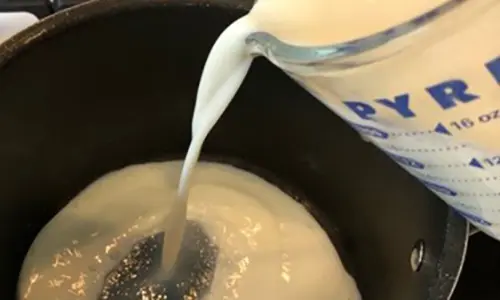
Measure the height of the milk in the pot using a wooden spoon.
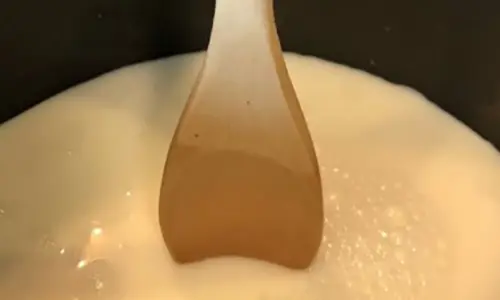
Note where on the spoon the milk rises to.
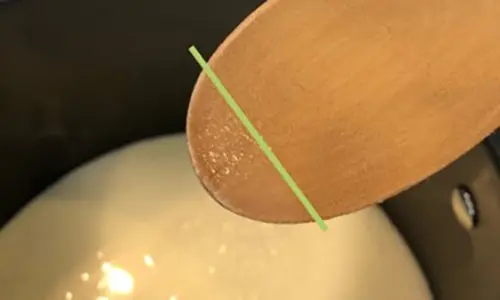
Add the remaining milk to the pot.
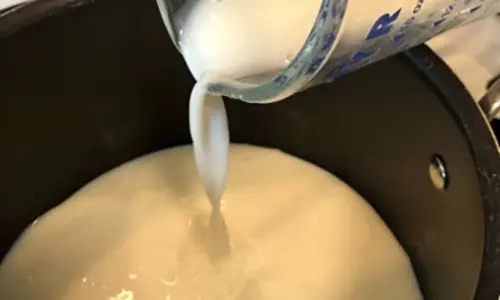
Add the sugar to the milk.
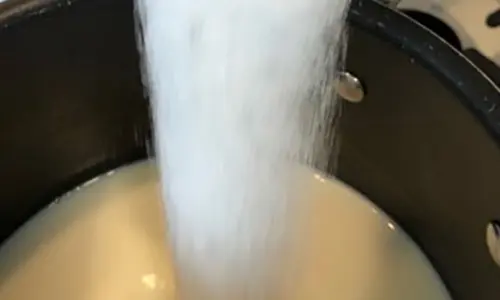
Bring the mixture to a low simmer over low heat. (I set my gas stovetop to just below “3”.) Stir frequently to prevent the milk from scalding. (Since this has been a problem for me, I intentionally kept the heat low and stirred a lot. Your kitchen will smell heavenly while you simmer your milk.)
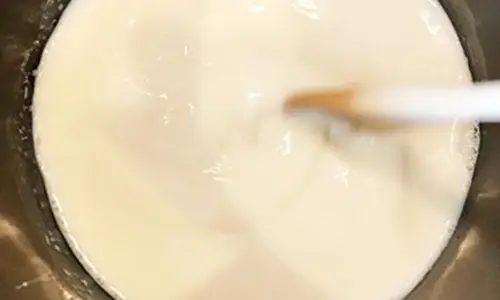
Remove and discard any skin that forms over the mixture while simmering. (This was not an issue for me; my milk and sugar mixture did not form a skin.)
Remove the pot from the heat when the milk and sugar mixture is reduced to the level you noted on the spoon. (This took about 40 minutes for me.)
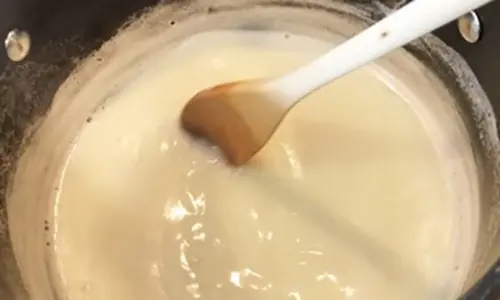
Add the butter (if using) or some vanilla (if you wish) and stir until it has melted completely.
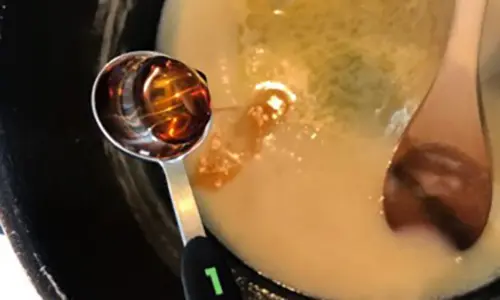
Allow the mixture to cool, and then pour it into a glass jar.
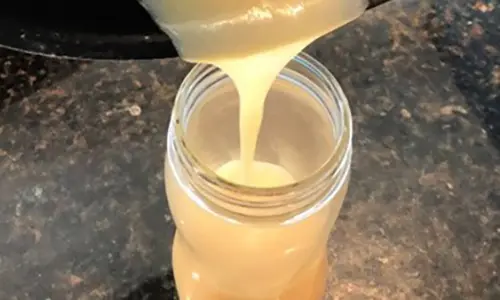
Seal tightly. (Eh. My jar is a little too big, but I’ve never been good at guesstimating volumes. For both water bath and pressure canning, you will want no more than about a half-inch of “headspace” at the top of your jar.)
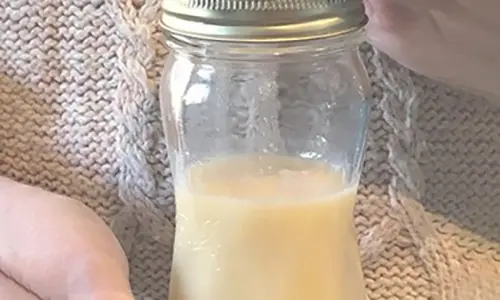
(The color of the milk will have changed slightly and will be a creamy, slightly caramel color.)
Storage
(A water bath canner is an option because the milk has already been simmered for a considerable amount of time—long enough to kill any bacteria.)
Place your jars in your canner or pressure canner and fill it with the amount of water recommended by the canner’s manufacturer (usually 2” to 3” above the top of your jars). Put the canner on the stove—on the hottest burner—and turn the burner on to medium heat.
Bring the water to a rapid boil and “cook” your milk, and quarts for 25 minutes or 20 minutes for pints.
Remove the canner from the heat, remove the jars, and allow them to cool completely before storing.
How to Make Evaporated Milk
The process for making evaporated milk is almost identical to that for making condensed milk. The main difference is that MILK is the only ingredient (skip the sugar, butter, and vanilla).
Evaporated milk can be reconstituted by mixing 1 part milk with 1 part water.
Including your own homemade condensed milk (which is ridiculously easy to make) in your homesteader pantry is a smart move. Not only is condensed milk a good choice nutritionally, it’s multi-purpose and inexpensive to make.
But what makes it especially useful to anyone seeking to be prepared for future events yet unknown is that it is incredibly long-lasting, requires no electricity for storage, and does not need to be protected from humidity or pests.
It might just be the perfect homesteader DIY.
What do you think? Will you try making your own long-lasting condensed milk? Have you used a different method to preserve milk? Let us know in the comments.
This article first appeared here.
You may also like:
20 Foods That Can Last 20 Years
The Succulent Red Plant That Tastes Like Bacon (Video)
How To Pickle Watermelon Rind The Amish Way
Deinfluencing You: Stop Stockpiling These 14 Items Right Now

